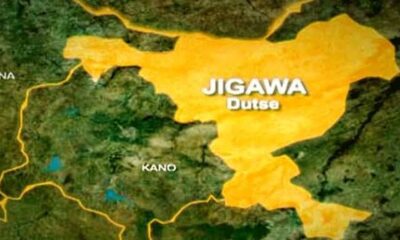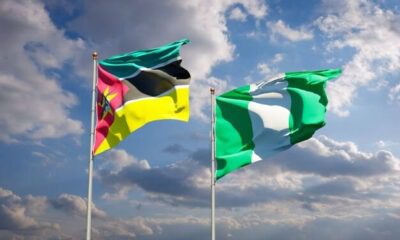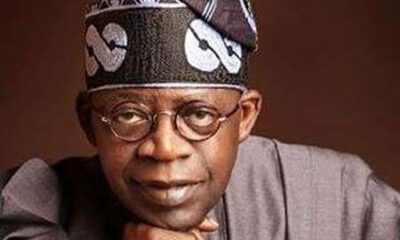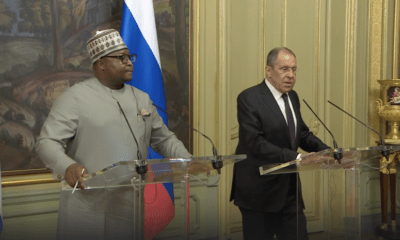Global Issues
Middle East in Turmoil -By Dr Mohamed Chtatou
Stemming from a schism linked to questions of succession to the Prophet Mohammed, who died in 632, these two currents of Islam sometimes clash in the Middle East, particularly in Iran and Saudi Arabia. Shiites are a minority in Iran, Iraq, Syria and Yemen. Iran is a Shiite religious state that asserts its power in the region by supporting its allies, notably Hezbollah in Lebanon and the Bashar al-Assad regime in Syria. It is opposed to Saudi Arabia, a Sunni power that is strengthening its influence through its alliance with the United States and by financing the spread of Wahhabi Islamist ideology.
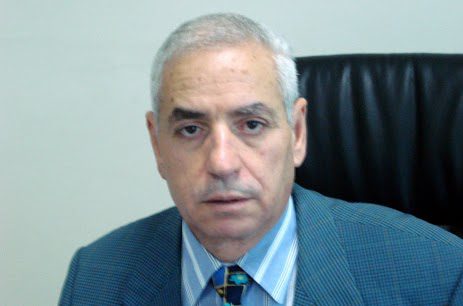
Geographically, the Middle East is an interface between the continents of Europe, Africa and Asia, including the countries between Egypt to the west, Iran to the east, Turkey to the north and the Arabian Peninsula to the south. The region was subject to Ottoman and then European influence, before the process of decolonization and the Cold War enabled the Americans and Soviets to extend their influence, and regional players to emancipate themselves by using oil revenues and energy weapons to influence international decisions.
The issue of water is an aggravating factor in conflicts in the region: rivers such as the Nile, Tigris, Euphrates and Jordan are shared by several countries, and access to water is necessary for agriculture in arid zones. How can we explain the persistence of conflict in the region, despite attempts at peace?
For Pierre Veremen, unstable Middle East can be summed up in the following words:
‘’After decolonization, Arab nationalism triumphed. Baathism came to power in Damascus and Baghdad (1963), and the Palestine Liberation Organization (PLO) was created in 1964. After 1967, these parties took over from the weakened Nasserism. The Organization of Petroleum Exporting Countries (OPEC) triggered the oil shock after the October 1973 war, and Egypt withdrew from the Arab-Israeli conflict.
On September 12, 1970, “Black September” drove the PLO’s military apparatus out of Jordan and into Lebanon. Tension mounts and on April 13, 1975, the Lebanese civil war begins. The confrontation between the Christian phalanxes (Kataëb) and the PLO (and its Lebanese allies) unknowingly began fifteen years of war. This rotating regional war never ceased until 2016. The Middle East has become the theater of all kinds of wars: civil, cold war, international, ideological, sectarian, interstate, terrorist.
The war stretches from Sinai to Afghanistan, with an epicenter between Lebanon and Palestine, in the great Ottoman Syria. Distant secondary hotbeds are emerging in Afghanistan, the Caucasus, Yemen and the Maghreb. The region is a vast theater of war with many faces. How do we navigate this succession of local and regional conflicts? Let’s try to offer a few keys to interpretation and intelligibility.’’
A geostrategic crossroads controlled until 1918 by the Ottoman Empire
A geostrategic crossroads from a geographical point of view, since the region is a key passageway with the Isthmus of Suez (which is the junction between the Mediterranean and the Red Sea), crossed since 1869 by the Suez Canal (built by French engineer Ferdinand de Lesseps). The Straits of Hormuz and Bab El Mandeb also control entry to the Persian Gulf and the Red Sea, which provides access to the Indian Ocean.
From the 16th century until the end of the First World War, this entire region, with the exception of Persia (today’s Iran), was dominated by the Ottoman Empire (a vast multicultural empire ruled by a Turkish sultan who bore the title of “Caliph, Commander of the Faithful” because the Empire controlled Mecca). By the end of the 19th century, the Ottoman Empire was in decline, losing territory to the Europeans (Algeria to the French, Egypt to the British). The influence of foreign powers was also felt, as they came to the defense of certain communities: Orthodox for the Russians, Catholics for the French.
The First World War marked the death of the Ottoman Empire, which chose the German camp, while the French and British, attracted by the region’s potential and oil wealth, agreed to control the region: the Sykes-Picot agreement of May 1916; the British fomented and supported the Arab revolt of 1916; in 1918, the Empire collapsed, and the Treaty of Sèvres established the division of the empire in 1920. France and England received mandates from the League of Nations to administer the territories. Syria and Lebanon for France, Iraq, Jordan and Palestine for England, with Turkey keeping only 420,000 km, and an Armenian and Kurdish state. Saudi Arabia received the Mecca region, and its king now controlled Islam’s holy places. But these “manufactured” and artificial borders will be a source of conflict.
A mosaic of peoples, cultures and religions
The region is rich in cultural diversity. It is the cradle of the Fertile Crescent civilizations (from Egypt to Mesopotamia) and of the first written language. A mosaic of peoples coexist in a certain rivalry. In the southern part, the Arabs expanded rapidly after the birth of Islam (in the 7th century, with the Eger dating from 632); the Turks in the north-west and the Persians in the east were at the head of great empires. Minority groups with no “nation” also coexist, such as the Kurds.
It’s also home to the three great monotheistic religions: first Jewish, then Christian and finally Muslim, so it’s home to all the holy sites (Jerusalem and the Wailing Walls, the Holy Sepulchre (Christ’s tomb), Mecca, the birthplace of the Islamic prophet Mohammed, and the Kaaba at the heart of the sacred Mosque (“Masjid Al-Haram”). In the 20th century, Judaism, which originated in Palestine, became a minority, while Christians split up into different traditions and rites (Catholics, Orthodox, Syriacs and Copts in Egypt). The most numerous Muslims are divided between two main currents: the Sunnis (the most numerous) and the Shiites (located in Iran and Iraq). As a result, believers in each religion seek control of their holy sites, leading to high levels of tension (e.g. Jerusalem and its historic center), and pilgrimages on the occasion of major commemorative festivals.
Stemming from a schism linked to questions of succession to the Prophet Mohammed, who died in 632, these two currents of Islam sometimes clash in the Middle East, particularly in Iran and Saudi Arabia. Shiites are a minority in Iran, Iraq, Syria and Yemen. Iran is a Shiite religious state that asserts its power in the region by supporting its allies, notably Hezbollah in Lebanon and the Bashar al-Assad regime in Syria. It is opposed to Saudi Arabia, a Sunni power that is strengthening its influence through its alliance with the United States and by financing the spread of Wahhabi Islamist ideology. The wars in Syria and Iraq are complicated by the intervention of these two countries. In Syria, for example, the Iranian Revolutionary Guards fought to help the Shiite leader Bashar al-Assad against his opponents in the Sunni-dominated Free Syrian Army (FSA). Conversely, Saudi Arabia is providing military support for the suppression of the Houthist insurgency in Yemen, as this is a rebellion by Shiite populations.
A difficult peace after 1920
The 1920 Treaty of Sèvres triggered a revolt by the Turks, led by General Mustafa Kemal. The victory, recognized by the Treaty of Lausanne (July 24, 1923), led to the suppression of Armenia and Kurdistan. The Arabs felt betrayed by the Europeans, and in turn revolted, particularly in Egypt and Iraq. The British recognized Egypt’s independence in 1922, and in 1932 the Kingdom of Saudi Arabia (with Mecca and Medina) was founded by Emir Ibn Saud, at the same time as large oil deposits were discovered.
By the 1930s, Jewish immigration was on the rise in British Palestine, and rivalries with Arabs were growing. The Balfour Declaration of 1897 strengthened Zionism.
Then came the Second World War, which shook the West, and the desire for independence began to make itself felt.
The Arab-Israeli conflict: from UN peace attempts to inter-state wars
The departure of the British from Palestine, administered under a League of Nations mandate since 1923, set in motion a crisis situation that remains unresolved to this day. Faced with the actions of the Haganah and Irgun, two Jewish paramilitary organizations, the British handed over their mandate to the UN in February 1947. Despite the UN’s proposal of a partition plan for Palestine, armed confrontations increased. On May 14, 1948, without waiting for the UN partition, David Ben Gourion proclaimed the creation of the State of Israel.
The Israeli-Arab wars pitted Israel against its Arab neighbors between 1948 and 1973. As soon as Israel became independent, the armies of Egypt, Iraq, Jordan and Syria attacked the country in 1948. A swift Israeli victory was accompanied by the departure of 700,000 Palestinian Arabs who fled the fighting. The first Palestinian refugee camps were set up in the West Bank, conquered by Jordan, and in the Gaza Strip, occupied by Egypt. This first war was followed by two others: the Six-Day War in 1967 and the Yom Kippur War in 1973, both of which were won by Israel. Peace agreements were signed between Israel and Egypt following the 1978 Camp David Accords, then with Jordan in 1994. Yet tensions remain high with Syria, Lebanon and other Arab states in the region, and conflicts with the Palestinian population are on the increase.
Actors in the Israeli-Palestinian conflict: armed organizations and international mediation
The Israeli-Palestinian conflict is the conflict between Israel and the Palestinian people. It began to take shape in the 1960s. In 1964, the Palestine Liberation Organization (PLO) was created. In 1969, Yasser Arafat took control and transformed it into an armed group. In 1987, the PLO helped launch the first Intifada, mobilizing a generation of young Palestinians against the Israeli occupation. The same year saw the creation of Hamas, an Islamist movement advocating both the liberation of Palestine and the destruction of Israel. The Oslo Accords, signed by Yitzhak Rabin and Yasser Arafat under US mediation in 1993, led to the creation of the Palestinian Authority. But the peace process did not last. Rabin’s assassination by an Israeli nationalist in 1995, the proliferation of attacks on Israeli soil and Israel’s military retaliation against the Palestinian territories undermined it. Faced with an upsurge in attacks, the Israeli authorities began building a wall separating Israel from the West Bank. The partition plan, highly favorable to Israel, proposed by the United States in January 2020 was immediately rejected by the Palestinian authorities, and peace still seems a very distant prospect.
New conflicts since the 1980s: the role of OPEC and political Islamism
Since the 1980s, oil has been at the heart of new types of conflict. The Middle East now accounts for almost 50% of the world’s oil resources. The founding in 1960 of the Organization of the Petroleum Producing Countries (OPEC) by Saudi Arabia, Iraq, Iran, Kuwait and Venezuela gave Middle Eastern countries the means to use the oil weapon to assert their weight on the international stage. This was demonstrated by OPEC’s decision to raise the price per barrel in 1973, in reaction to US support for Israel during the Yom Kippur War. This decision shook the world economy and revealed the power of the energy weapon (first oil shock, 1973).
Political Islamism has also been at the heart of the region since the 1980s. The Islamic revolution of 1979 contributed to the prestige and rise of Islamism in the Middle East. Led by the Revolutionary Guards, Iranian students of religion, and their spiritual guide, Ayatollah Khomeini, the revolution resulted in the flight of the Shah of Iran and the establishment of a theocracy hostile to the United States, which lost a valuable ally in the region. The victory of Iranian fundamentalism gave new impetus to politico-religious movements in the region.
US involvement in the Middle East
In 1990, Saddam Hussein decided to invade neighboring Kuwait, which had substantial oil reserves. The United States obtained a UN mandate and intervened at the head of a broad coalition of countries (United States, France, United Kingdom, Egypt, Saudi Arabia, Syria, etc.). They liberated Kuwait and entered Iraq. The war quickly drew to a close in the face of the coalition’s military superiority. In a way, this war marked the end of the Cold War in the region, as the United States intervened victoriously, with UN approval, demonstrating its control of the area and the powerlessness of the USSR.
But the United States’ influence in the region was shaken in the 2000s. The attacks of September 11, 2001 and the war in Iraq in 2003 marked a major turning point for US involvement in the Middle East. Following the al-Qaeda attacks of September 11, 2001, which killed some 3,000 people in New York, the United States saw itself as engaged in a war against terrorism. It invaded Afghanistan in 2001 to destroy al-Qaeda. Iraq is also accused of secretly running a nuclear program and supporting international terrorism. The United States also wanted to depose Saddam Hussein, who had remained in power after the 1991 intervention, and secure Iraq’s oil reserves. These reasons led to the invasion of Iraq in March 2003, without a UN mandate, by a US-led coalition. More than 500,000 people died, the country became mired in civil war and a new terrorist organization, the Islamic State in Iraq and the Levant (IS), was born in the ruins of the country.
The players in Syria’s civil war: alliances and international coalition
In 2011, a revolution broke out in Syria. Bashar al-Assad’s regime retaliated by force, and the revolutionaries took up arms. This marked the start of a very long civil war, pitting the regime against the rebels. Bashar al-Assad managed to hold on to power with the help of his Russian ally, but the conflict caused the deaths of 400,000 people, and 5.5 million Syrians fled the country, according to the UN.
The Islamic State (IS) took advantage of the civil war to gain a foothold in Syria from 2013 onwards. The IS, stretching across both Iraq and Syria, was proclaimed in 2014 by its leader, Abu Bakr al-Baghdadi. An international coalition is assembled to confront it, made up of Arab countries, Kurdish forces, Turkey, the United States, France and Russia. This coalition succeeds in defeating the IS in Syria, and Abu Bakr al-Baghdadi is killed on October 27, 2019, but the region remains permanently destabilized by the wars in Iraq and Syria, and by ongoing tensions between the United States and Iran.
In 2011, in the wake of the Arab Springs in Tunisia and Egypt, a revolution broke out in Syria. The violent response of Bashar al-Assad’s regime led the rebels to form their own army, the Free Syrian Army (FSA) in 2011, with Western support. The war soon involves many other players: Russia provides military support to the regime, as do the Iranian Revolutionary Guards. The Kurds tried to set up an autonomous state, and Turkey intervened to try and stop them. The terrorist organization Islamic State, founded in Iraq, takes advantage of the chaos to gain a foothold in eastern Syria, and an international coalition is formed to try to destroy it. This long-lasting conflict is extremely destructive, with around 400,000 deaths and 5.5 million refugees.
kaleidoscope
The Middle East appears like a kaleidoscope, its image shattered and reconstituted by the movements of the hand, each time creating a strange composition of more or less integrated shapes and colors.
Since the events of spring 2011, instability has accompanied the establishment of Muslim Brotherhood power, a major characteristic, more or less asserted, of all the countries that rose up against their leaders. The medium-term trend of this long upheaval is the establishment of an Islamist regime throughout the Middle East and North Africa.
The current crisis in Gaza has taught us a number of important lessons. Firstly, the United States, which was seen to be losing interest in the events, intervened by throwing all its weight behind the protagonists, relying on Egypt and urging the Israelis to abandon a ground offensive. Secondly,the war against Hamas is turning into a genocide of the Palestinian people without any humanitarian concern for innocent civilians. The Western world to make up for its sin of letting the Germans kill six million innocent Jews is giving Israel a free hand in Palestine to exterminate the Arabs and take their land. So, a sin is repaired by another sin and the conscience of the West is at rest.
How to avoid a conflagration? To the north of Israel, in a bloodless Lebanon, Hezbollah, armed and financed by Iran like Hamas, has all the military means to open a second front, and says it is ready. Will Teheran give the green light? Is it in its interests? To the west, Egypt fears above all an evacuation of Gazans to Sinai, with President Fattah al-Sissi caught between public opinion and pressure from his American ally to the point of appealing to China. To the south, in Syria, the rump regime owes its survival to Iran and even more so to Russia – Vladimir Putin is quick to denounce the heaps of civilian casualties and sees the point of another war eclipsing the conflict in Ukraine. Qatar, traditionally the haven and financier of the Muslim Brotherhood and Hamas, could play the role of mediator, as could Turkey’s Erdogan, who has declared his support for the Palestinian cause. What will the Crown Prince of Saudi Arabia, whose rapprochement with Jerusalem has come to a screeching halt and who is now in direct talks with the Iranian President, do?
Across the Arab world, the streets are once again ablaze with support for the Palestinian cause. It has never disappeared, but is filling the void left by regional regimes encouraged to normalize their relations, and by major international players busy elsewhere. Hamas has managed to catch everyone unawares. The United States has been forced back into the Middle East after having been forced back into Europe: what room for manoeuvre does President Biden have, as he forcefully reaffirms his unwavering support for Israel? Are Europeans and France condemned to impotence as their own public opinion heats up dangerously? Who will finally call for de-escalation, calm the belligerents, propose a plan, a conference, or is the international system, starting with the UN, so fractured that only hatred and war have free rein?
In answer to some of these question Philippe Droze-Vincent writes:
‘’The regional situation is not just an algebraic sum of “hot” issues, which in recent years have tended to increase in number and complexity. It is also the product of a regional context that has become increasingly degraded as a result of the “American moment in the Middle East” that the G. W. Bush administration sought to instigate. The future of Iraq remains uncertain, the Lebanese presidential election is dangerously deadlocked (thirteen rounds of voting in January 2008), and Condoleeza Rice’s renewed American commitment to the Israeli-Palestinian problem (Annapolis meeting, Paris donors’ conference, President Bush’s visit to the Middle East in January 2008) is struggling to move beyond rhetoric. Conflicts are resolved, or even remain within contained frameworks if these exist, if there are limitations, red lines, implicit boundaries. In certain contexts, these perspectives dissipate in the growing heterogeneity of regional relations.’’
You can follow Professor Mohamed Chtatou on Twitter: @Ayurinu

